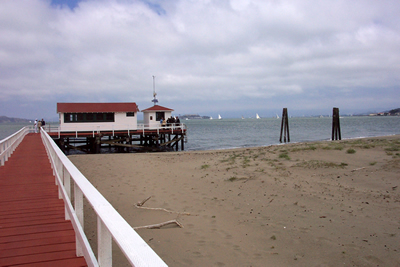Sea level data has been collected continuously since 1854 at this tide gauge house in San Francisco, California, US.
Click on image for full size
Courtesy of NOAA and photographer Captain Albert E. Theberge
Sea Level
Sea level is the height of the ocean surface. Scientists measure sea level to figure out how much sea level rise is happening now because of global warming.
If you tried to draw a flat line at the top of the ocean to mark the sea level you would find that in some places there was water above the line and on other places there was water below the line. This is because of tides and waves. The ocean surface can also bulge upward because of the low atmospheric pressure of a storm. With all these ups and downs, how do scientists measure sea level?
To even out the differences in sea level caused by waves, scientists use instruments called tide gauges. These containers are installed in the shallow parts of the ocean. They block out the waves while measuring sea level. There are thousands of tide gauges around the world that are recording how high the ocean is all the time. The information they record is averaged. Satellites have also been used to measure sea level since 1992.
Today, sea level worldwide is rising. This is because global warming melts glaciers and causes seawater to expand, increasing the amount of water in the oceans. Sea level can also change over geologic time as plate tectonics changes the shape of the oceans and how much water they can hold.
Last modified July 22, 2008 by Lisa Gardiner.
You might also be interested in:
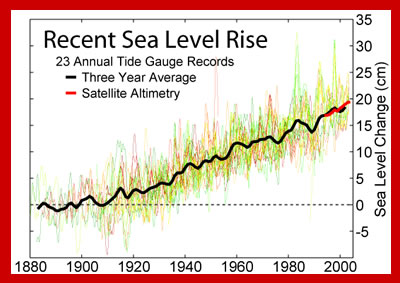
Sea level is creeping higher each year as the Earth warms. As sea level continues to rise, there are many low coastal areas worldwide where homes, towns and cities are in danger of being flooded
...more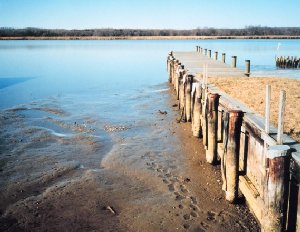
Have you ever walked along the same beach at different times during the day? Did you notice that sometimes the water was higher up on the beach than at other times? Changes in the height of ocean water
...more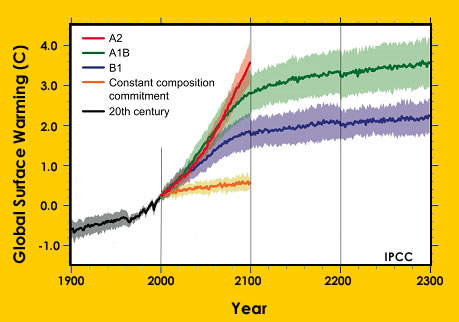
Earth’s climate is getting warmer. During the past 100 years Earth’s average temperature rose about 0.6° Celsius (1.0° F). Things that people are doing like burning fossil fuels, changing the way land
...more
This page is not yet developed at the elementary level. Please check back for updates or click on the "Intermediate" button above for information.
...more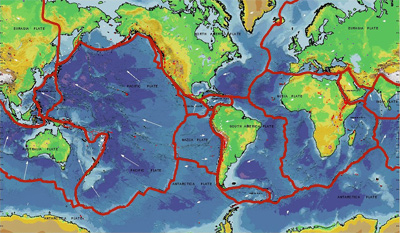
Many forces change the surface of the Earth over time. The largest force that changes our planet's surface is movement of Earth's outer layer in a process called plate tectonics. As shown in this picture,
...more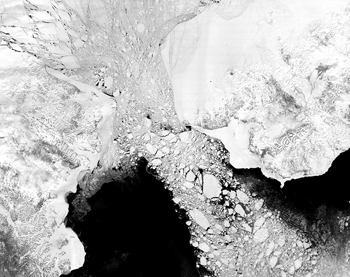
Sometimes, a small change in the Earth can lead to a big change in climate. A new study shows that changes in the Bering Strait might have affected ocean currents and climate worldwide thousands of years
...more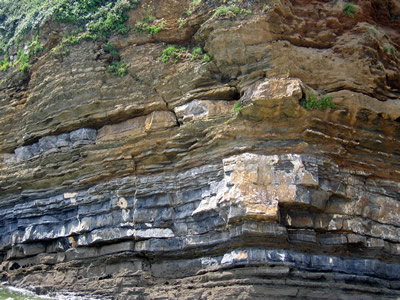
Geologists have been studying a new way to learn where sedimentary rocks formed during the Paleozoic Era. Balil Haq, a marine biologist, explains that scientists are using something called a sediment curve
...more


